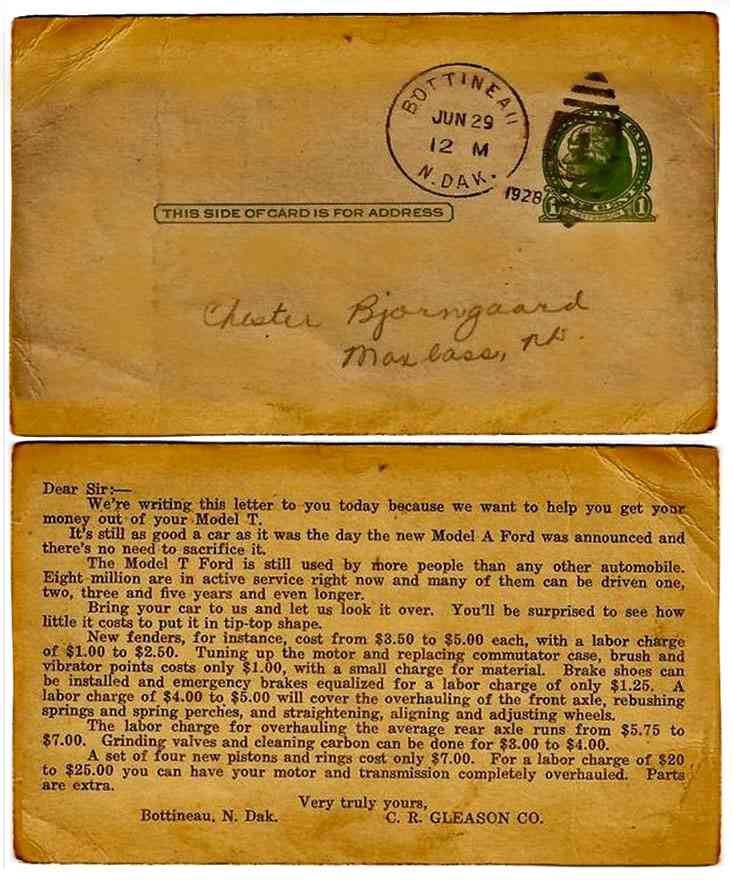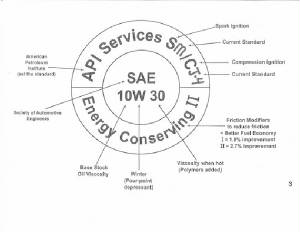|
Chuck Myers CM Automotive Service |
|
|
Your Car!
|
|
|
At the top of the donut, you'll find the phrase "API Service" followed by a two-letter abbreviation. Each of the letters
in the following two-letter code tells you something about the oil: The first letter tells you what type of engine a motor oil was formulated for: S-type oil is for gasoline engines, and
C-type oil is for diesel engines. The second letter tells you the general quality of the oil. The higher the letter, the better the oil. For regular gasoline engines, you'll likely find SJ, SL, and SM motor oils. If your owner's manual recommends SJ-quality
oil, you can upgrade to SL or SM, but you should never downgrade to a lower-quality oil. In the center of the API donut is the viscosity rating. Viscosity is the measure of a fluid's thickness, or its
resistance to flow. Low-viscosity fluids (like water) flow easily; high-viscosity fluids (like honey), are thick and don't
run as easily. Viscosity ratings are set by the Society of Automotive Engineers (SAE). For many years, a motor oil had only a single
viscosity grade (or weight). Today's oil companies add polymers to its oils to produce a multigrade (or multi-weight)
oil that is designed to have the viscosity of a 5W oil (the "W" stands for winter) in cold weather and a viscosity
of 30 at normal engine temperatures. Multigrade oils give your engine the low viscosity it needs at startup (especially during
the winter) as well as the higher viscosity it needs when you hit the highway. Along the bottom of the API donut, you may see the phrase "Energy Conserving." Oils with this label have added friction
modifiers to improve fuel efficiency. Oils have to pass certain independent tests to receive the "Energy Conserving" seal.
|
Did you know Your car's Owner's Manual is full of useful information about maintaining
your car. Many folks leave the owner's manual in the glove box. Get yours out and read it. You'll be surprised at the wealth of useful information contained
in the owner's manual Did you know The quality of the gasoline you use is important to how well your car performs? All gasoline is not equal! Avoid no name or 'cut rate' gas stations. The few pennies you save per gallon may cost you hundreds if not thousands of dollars in repairs. Gasoline needs detergent additives to prevent deposits in your fuel injectors and on your valves and pistons. Deposit build up is harmful and robs your car of fuel mileage and performance. It's not necessary to buy premium grade of gasoline if your car's owner's manual does not specify premium. In fact 87 octane 'regular' gas if fine for most cars. It is necessary to buy gas that has a good 'additive package'. For more about the quality of gasoline visit http://www.toptiergas.com/
Even though you use a top quality gasoline it's still possible to develop clogged injectors and clogged fuel injectors
cost you money. How? Each brand of gas has its own unique additives. Over a period of time the additives themselves can form
a buildup on the injectors distorting their spray pattern and hurting your fuel mileage. The cure? Simple, change brands of gas every 5,000 miles alternating between two or three quality brands of gas. Here's how it works. Over time brand A's additive will begin to leave its own deposits on your car's fuel
injectors. When you switch to brand B the additive in B will usually dissolve the deposits left from brand A resulting in
a cleaner injector. Alternating your brand of gas is an easy method for maintaining a well performing, fuel efficient car. Give us a call and we'll be happy do discuss your local gasoline options. |
|
|
|

